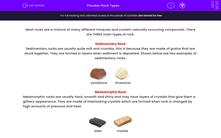Most rocks are a mixture of many different minerals and contain naturally occurring compounds. There are three main types of rock.
Sedimentary Rock
Sedimentary rocks are usually quite soft and crumbly. This is because they're made of grains of rock stuck together, which were eroded and deposited over millions of years. They're formed in layers when sediment (bits of rock and sand) is deposited, often in rivers and lakes. Over time, more sediment is deposited and the newer layers at the top start to push down on the bottom layers. This pressure squeezes any water out and the minerals in the sediment act like glue to cement the grains together, forming sedimentary rock. Shown below are two examples of sedimentary rocks.
.jpg) |
 |
| sandstone | limestone |
Fossils are often found in sedimentary rock. Fossils form when dead animals and plants become covered in sediment before they rot. The remains of the organisms can turn into rock and they often keep their shape.

Metamorphic Rock
Metamorphic rocks are usually hard, smooth and shiny and may have layers of crystals that give them a glittery appearance. The rocks may also have different coloured bands or distorted layers. Metamorphic rocks are made of interlocking crystals which are formed when high amounts of pressure and heat change rock. This is often because earth movements can bury and compress (squash) rocks, so heat from the magma can cause them to change.
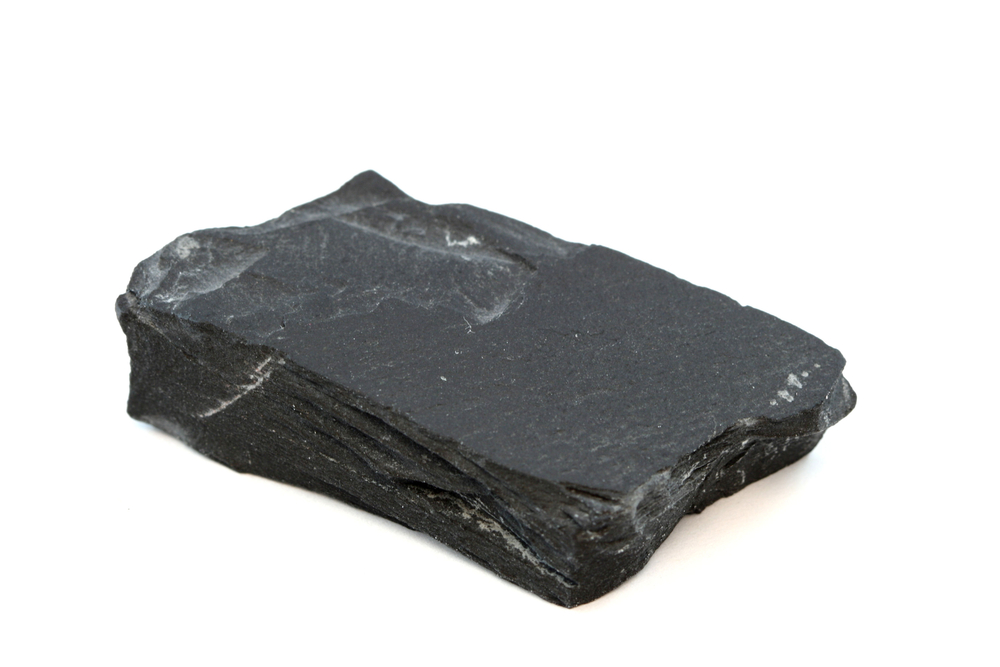 |
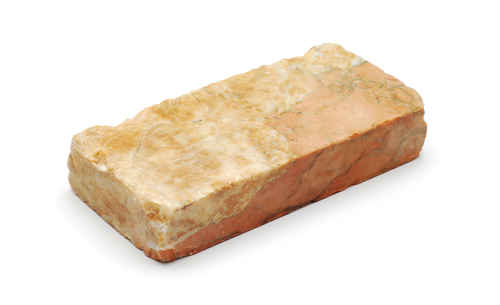 |
| slate | marble |
Igneous Rock
Igneous rocks are very hard and similar to metamorphic rocks and are formed by interlocking crystals. They are formed when molten rock cools and solidifies. The size of the crystals depends on the rate of cooling.
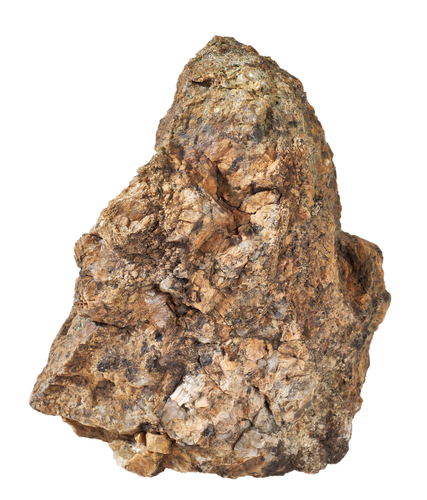 |
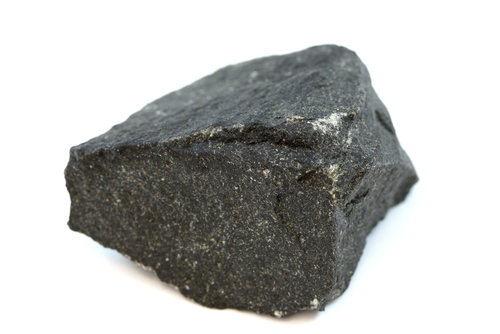 |
| granite | basalt |
If magma is trapped underneath the ground it will tend to cool very slowly. This forms rocks with large crystals. However, if the magma reaches the surface of the Earth and flows out (called lava) it will cool down quickly. This forms small crystals in the igneous rock.
We can use this activity to test our knowledge of rocks and how they're formed.

